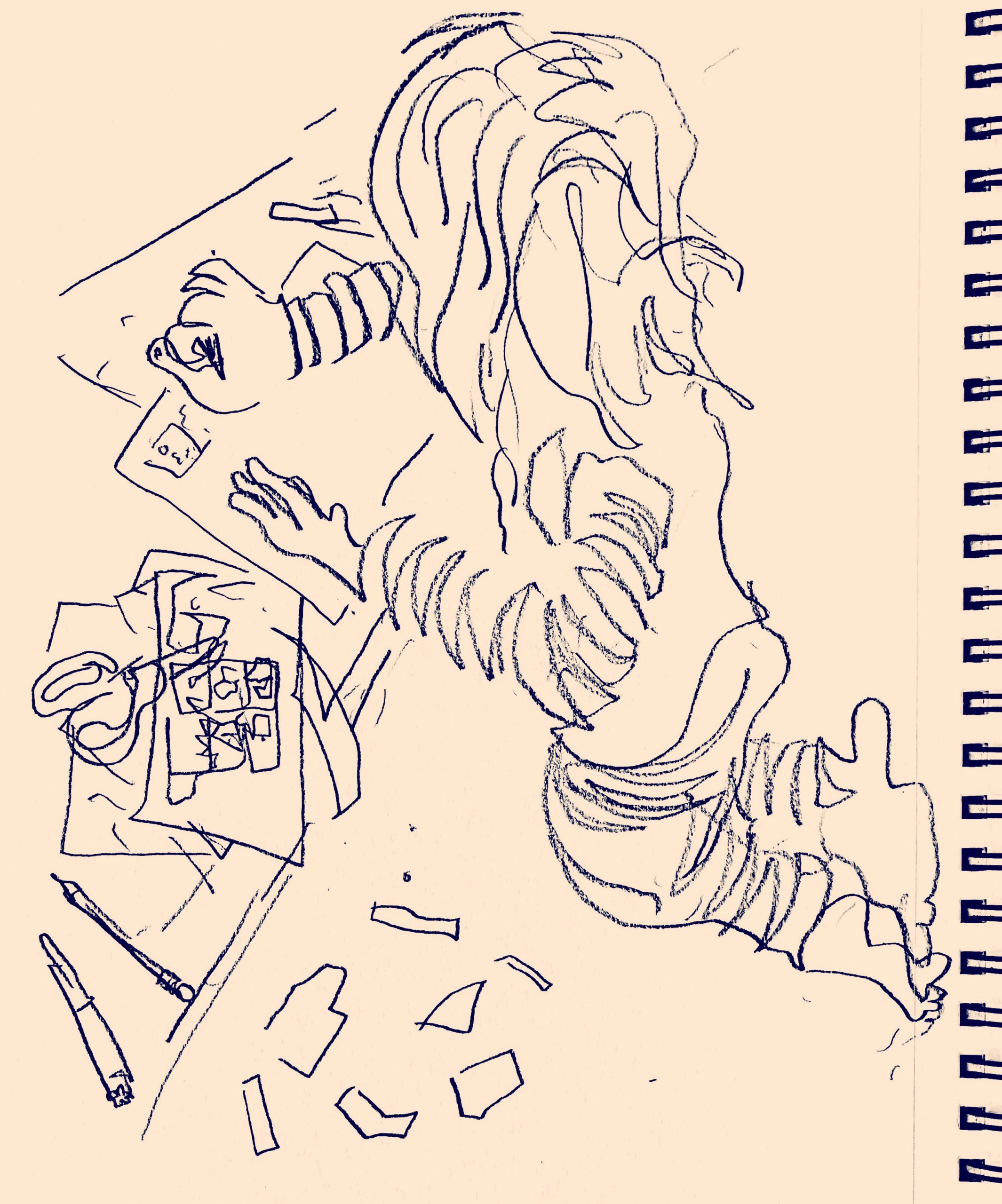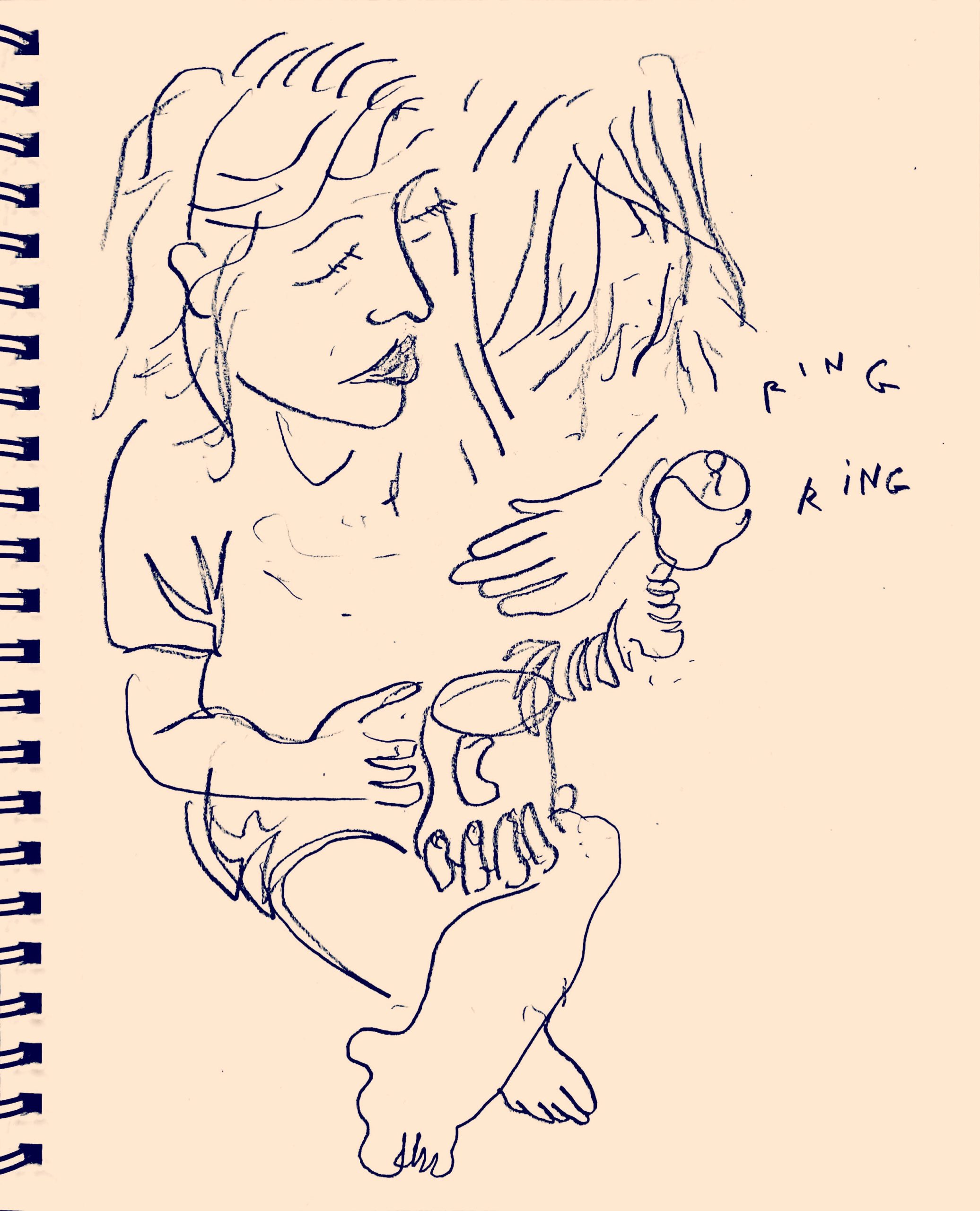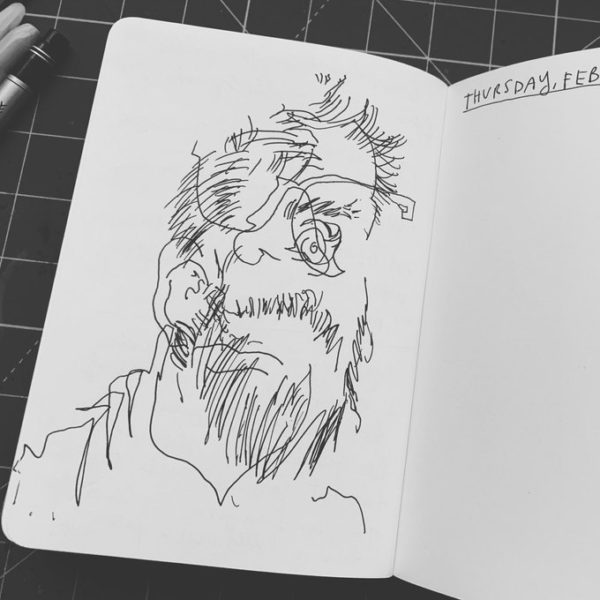
A Saturday morning with elementary school-aged kids: These drawings were drawn before 8:30 a.m. (Made a couple blind contours, too.)


A Saturday morning with elementary school-aged kids: These drawings were drawn before 8:30 a.m. (Made a couple blind contours, too.)


RIP Charles Portis. He’s the only writer whose novels I’ve read twice. (I re-read all five of them last summer when I was in a real funk.)
If you’re wondering where to start, you can’t go wrong with True Grit. After that, I’d probably read the books that came after in order of publication — The Dog of the South, Masters of Atlantis, Gringos — and then swing back for his first novel, Norwood.
Portis was a master not just of opening lines, but opening pages. (Levi Stahl posted all five of them on Twitter.) Here’s the opening of The Dog of the South:
When I re-read Gringos, it not only became my personal favorite of his books, I’ve adopted several of its sentences into my (mental) file of life-guiding aphorisms:
“We had both known the despair of trying to sell things that nobody wanted.”
“The trick is to make yourself first useful and then necessary.”
“Short was good in a book.”
There are many nice remembrances of him out there: John Brummett sat next to him at his regular bar, Jonathan Rogers’ mom used to quote Mattie Ross to explain her teetotalling, and Wells Tower says he feels less mean when he reads him. (Same.)
I used to hope he was working on a final novel, but I also sort of wished he was on his porch somewhere in Little Rock, sipping whiskey, just hanging out and enjoying life. (Unfortunately, he spent the last six years in a memory care unit.) But it seems like he lived right: kept his overhead low, kept away from unhelpful fame, wrote, traveled to Mexico, and shopped yard sales to find extra parts to keep his typewriter working.
Since there aren’t any more novels to read, I’m off to finally read his miscellany, Escape Velocity. (And maybe sip some whiskey.)

For the past week, I’ve been making a blind contour self-portrait — drawing without looking at the page — each morning to warm up my diary.

If you look at the images in order, it looks like my face is re-arranging itself. I love that.

My friend Wendy MacNaughton assigns these drawings in her workshops. My friend Jason Polan used to do a lot of his Every Person in New York drawings this way.

Sam Anderson, one of my favorite writers, wrote a wonderful Letter of Recommendation for blind contour drawing five years ago in the New York Times. (How in the hell did I miss that?)
He wrote of his frustrations with trying to draw in his adult life: “The problem, fundamentally, was one of control — I had too much of it, over too tiny a territory, and I wasn’t willing to surrender it. You can’t control your way out of control.”
(I’m thinking of Brian Eno’s control <–> surrender diagram that he likes to draw.)
Then an artist friend suggested to him he draw without looking at the page.
“For the first time in my adult life, I was genuinely surprised by something I had drawn.”
He later discovered that blind contour drawing is an old art school exercise:
Freshmen at art school are forced to draw blindly for hours. It’s the fastest way to break them out of old bad habits, to make them unlearn lifeless conventions. The goal of blind drawing is to really see the thing you’re looking at, to almost spiritually merge with it, rather than retreat into your mental image of it. Our brains are designed to simplify — to reduce the tumult of the world into order. Blind drawing trains us to stare at the chaos, to honor it. It is an act of meditation, as much as it is an artistic practice — a gateway to pure being. It forces us to study the world as it actually is.
(You can see Sam’s drawings on his Instagram. And go read Boom Town while you’re at it.)

I think a lot of people come to contour drawing in Betty Edwards’ classic book, Drawing on the Right Side of the Brain, but I actually prefer the way Kimon Nicolaïdes writes about it in his 1941 book, The Natural Way to Draw. (Edwards sort of waves away Nicolaïdes’ emphasis that “students imagine that they were touching the form as they drew,” but I find his multi-sensory emphasis much more convincing than her left brain / right brain explanation.)
Nicolaïdes writes:
Learning to draw is really a matter of learning to see — to see correctly — and that means a good deal more than merely looking with the eye. The sort of ‘seeing’ I mean is an observation that utilizes as many of the five senses as can reach through the eye at one time. Although you use your eyes, you do not close up the other senses — rather, the reverse, because all the senses have a part in the sort of observation you are to make.
He tells the reader to sit close, learn forward, and sync up a point on the thing being drawn with the eye while simultaneously syncing up pencil to paper. “Imagine that your pencil point is touching the model instead of the paper. Without taking your eyes off the model, wait until you are convinced that the pencil is touching that point on the model upon which your eyes are fastened.” He says only then should you start to move your eye and pencil along the edges of the thing being drawn, slowly, slowly. “Be guided more by the sense of touch than by sight.”
This exercise should be done slowly, searchingly, sensitively. Take your time. Do not be too impatient or too quick. There is no point in finishing any one contour study. In fact, a contour study is not a thing that can be ‘finished.’ It is having a particular type of experience, which can continue as long as you have the patience to look.

If you’re looking for a way to loosen up and bring life to your drawings, try drawing without looking at the paper.
Here is a photograph of the chalkboard at the end of one of Marc Weidenbaum’s classes. He says a lengthy classroom discussion of “what sound looks like” led to “this mid-period Basquiat.”
I just love looking at these markings. Weidenbaum has posted a few whiteboards on his site, but they just don’t have the same magic.
What is it about chalk?
Photographer Jessica Wynne has posed exactly that question with her series of photos Do Not Erase, which capture the chalkboards of mathematicians across the world.
From the NYTimes profile, “Where Theory Meets Chalk, Dust Flies”:
“I am attracted to the timeless beauty and physicality of the mathematicians’ chalkboard, and to their higher aspiration to uncover the truth and solve a problem,” Ms. Wynne said in an email. “Their imagination guides them and they see images first, not words. They see pictures before meaning.”
She added: “I am also fascinated by the process of working on the chalkboard. Despite technological advances, and the creation of computers, this is how the masters choose to work.”
In their love of blackboards and chalk, mathematicians are among the last holdouts. In many fields of science and investigation, blackboards have been replaced with whiteboards or slide show presentations. But chalk is cheaper and biodegradable. It smells better than whiteboard markers and is easier to clean up, mathematicians say. It is also more fun to write with.
Only chalkboards will do:
Wynne says she deliberately shunned whiteboards, or digital boards. “I like the timelessness about blackboards,” she says, adding that they are also intriguing for their capacity to show layer upon layer of working.
There’s something about having the space to think:
The sheer size of blackboards, ranging from single wall affairs to extensive, multi-panel boards, is important. “It is this giant canvas,” says Wynne. “Seeing everything in one large piece, you can jump around on the board and connect pieces and take things away and add things… I haven’t seen any other tool or any other device that matches that experience.”
And there’s something about the chalk itself.
In this video, “Why The World’s Best Mathematicians Are Hoarding Chalk,” mathematicians discuss why they’re so obsessed with Japanese chalk from the brand Hagoromo.
“There’s a real value to this,” one mathematician says, holding up a stick. “But the value is in using it up. Not hoarding it.”
So, yeah: chalkboards, man. I mean, even the erased boards are beautiful…
* * *
Previously on the blog: chalkboard drawings by artists

In Paul Ford’s funny and informative guide for people who have been asked to be in the media, he lays out “the most important rule of media”:
Nothing matters, and nothing works. If you’re selling a book, everyone will want you to go on TV to promote the book. That will sell negative ten books. Some stupid tweet will sell 1,600 copies of the book. I mean obviously if Oprah wants to feature you and tells people to get your book, the math changes. Sometimes things do work! But in general nothing matters, and nothing works. You won’t cost yourself your career if you say no.
In my experience, this is (sometimes painfully) very true.
For more of Paul’s wisdom, see: “Why wasn’t I consulted?” and “What to say when you don’t know what to say”
This site participates in the Amazon Affiliates program, the proceeds of which keep it free for anyone to read.